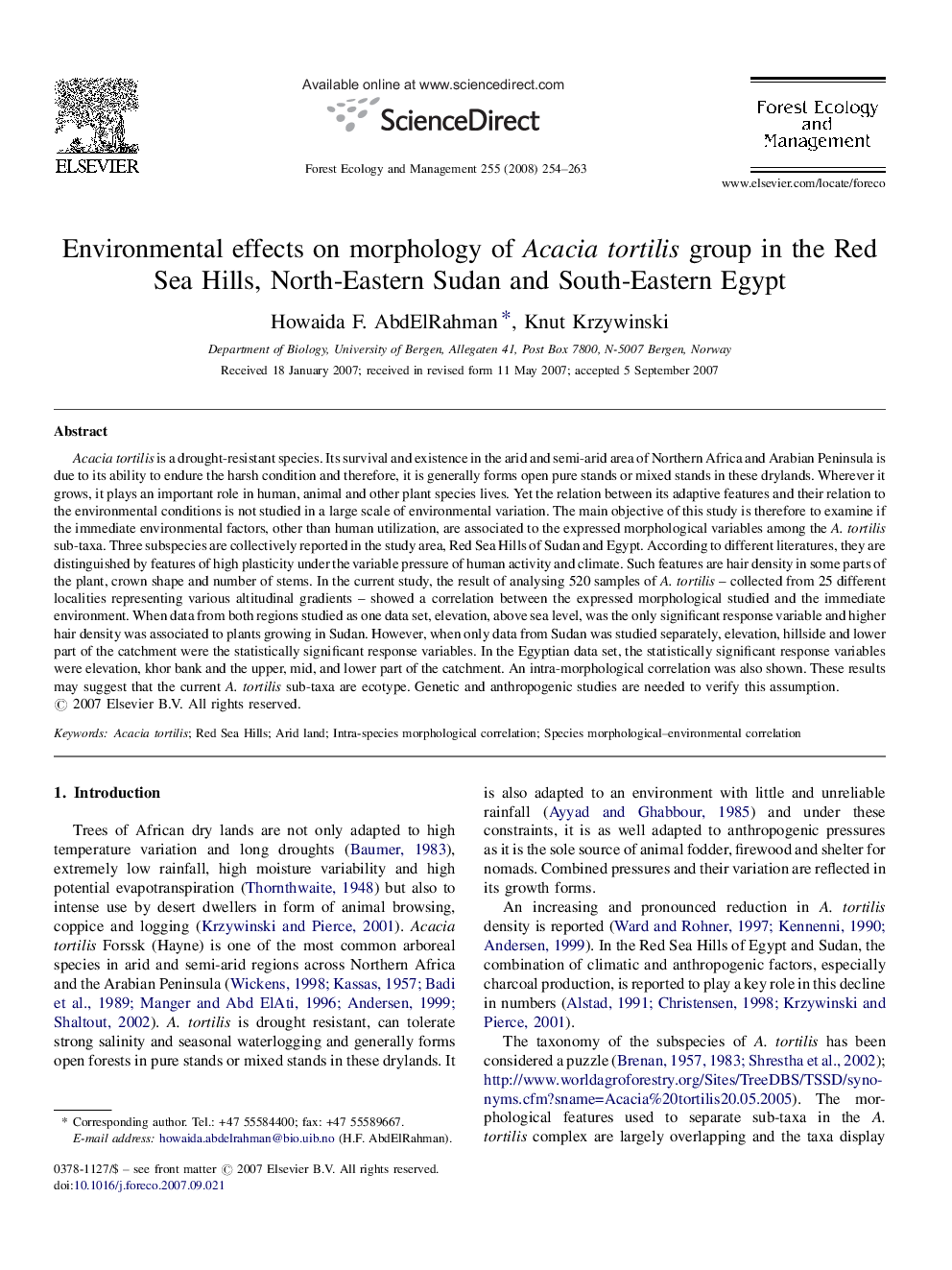| کد مقاله | کد نشریه | سال انتشار | مقاله انگلیسی | نسخه تمام متن |
|---|---|---|---|---|
| 89603 | 159347 | 2008 | 10 صفحه PDF | دانلود رایگان |

Acacia tortilis is a drought-resistant species. Its survival and existence in the arid and semi-arid area of Northern Africa and Arabian Peninsula is due to its ability to endure the harsh condition and therefore, it is generally forms open pure stands or mixed stands in these drylands. Wherever it grows, it plays an important role in human, animal and other plant species lives. Yet the relation between its adaptive features and their relation to the environmental conditions is not studied in a large scale of environmental variation. The main objective of this study is therefore to examine if the immediate environmental factors, other than human utilization, are associated to the expressed morphological variables among the A. tortilis sub-taxa. Three subspecies are collectively reported in the study area, Red Sea Hills of Sudan and Egypt. According to different literatures, they are distinguished by features of high plasticity under the variable pressure of human activity and climate. Such features are hair density in some parts of the plant, crown shape and number of stems. In the current study, the result of analysing 520 samples of A. tortilis – collected from 25 different localities representing various altitudinal gradients – showed a correlation between the expressed morphological studied and the immediate environment. When data from both regions studied as one data set, elevation, above sea level, was the only significant response variable and higher hair density was associated to plants growing in Sudan. However, when only data from Sudan was studied separately, elevation, hillside and lower part of the catchment were the statistically significant response variables. In the Egyptian data set, the statistically significant response variables were elevation, khor bank and the upper, mid, and lower part of the catchment. An intra-morphological correlation was also shown. These results may suggest that the current A. tortilis sub-taxa are ecotype. Genetic and anthropogenic studies are needed to verify this assumption.
Journal: Forest Ecology and Management - Volume 255, Issue 1, 20 February 2008, Pages 254–263